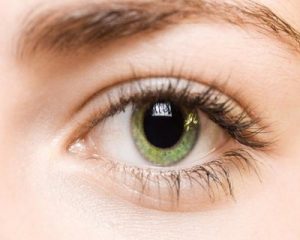- Home
- Editorial
- News
- Practice Guidelines
- Anesthesiology Guidelines
- Cancer Guidelines
- Cardiac Sciences Guidelines
- Critical Care Guidelines
- Dentistry Guidelines
- Dermatology Guidelines
- Diabetes and Endo Guidelines
- Diagnostics Guidelines
- ENT Guidelines
- Featured Practice Guidelines
- Gastroenterology Guidelines
- Geriatrics Guidelines
- Medicine Guidelines
- Nephrology Guidelines
- Neurosciences Guidelines
- Obs and Gynae Guidelines
- Ophthalmology Guidelines
- Orthopaedics Guidelines
- Paediatrics Guidelines
- Psychiatry Guidelines
- Pulmonology Guidelines
- Radiology Guidelines
- Surgery Guidelines
- Urology Guidelines
Ultrasonography as good as OCT in accurately detecting posterior vitreous detachment

South Korea: Both ultrasonography (US) and optical coherence tomography (OCT) have more or less the same diagnostic ability in evaluating posterior vitreous detachment (PVD) status, suggests a recent study in the journal Acta Ophthalmologica.
Compared to OCT, the interpretation of US images was more investigator-dependent and showed lower inter-examiner agreement than that of OCT, making the interpretation of the US images more subjective. Addition of peripapillary OCT scan images can improve the diagnostic ability of OCT.
PVD is a very common eye condition characterized by separation of the posterior vitreous cortex (PVC) from the internal limiting membrane of the retina due to weakening of the vitreous cortex/internal limiting membrane adhesion, in conjunction with liquefaction within the vitreous body.
Key findings include:
- The inter-observer agreement on PVD grading based on US was substantial (kappa = 0.628).
- The inter-observer agreement on PVD grading based on OCT was almost perfect (transverse and peripapillary scan, kappa = 0.893; transverse scan only, kappa = 0.923).
- The PVD grading based on transverse and peripapillary OCT perfectly matched the final PVD grading (kappa = 1.00).
- The PVD grading made based on US and transverse scan only showed almost perfect agreement with the final PVD grading (US, kappa = 0.834; transverse scan only, kappa = 0.906).
"The combination of enhanced vitreous imaging (EVI) and peripapillary scan mode OCT could accurately determine the PVD status of patients," concluded the authors.
To read the complete study follow the link: https://doi.org/10.1111/aos.14189

Disclaimer: This site is primarily intended for healthcare professionals. Any content/information on this website does not replace the advice of medical and/or health professionals and should not be construed as medical/diagnostic advice/endorsement or prescription. Use of this site is subject to our terms of use, privacy policy, advertisement policy. © 2020 Minerva Medical Treatment Pvt Ltd